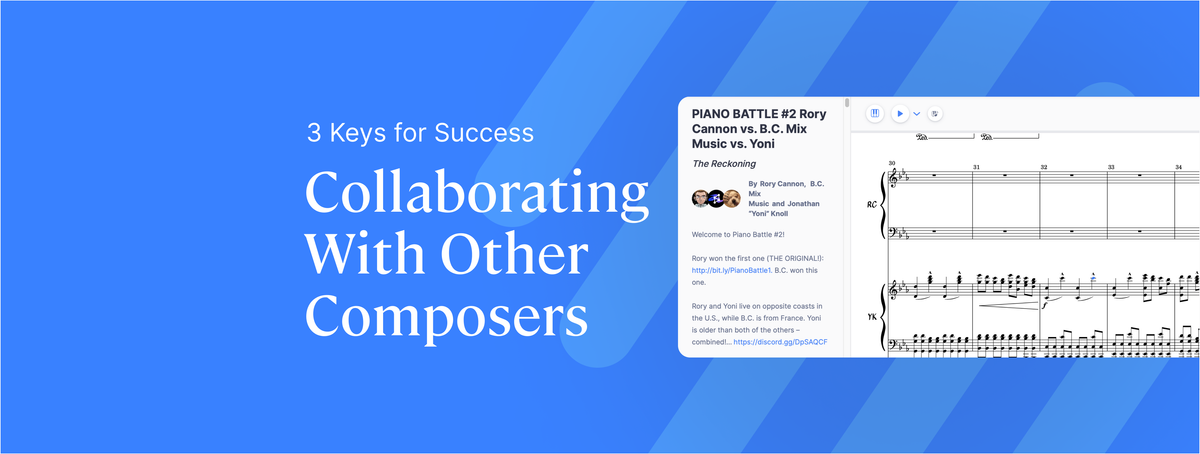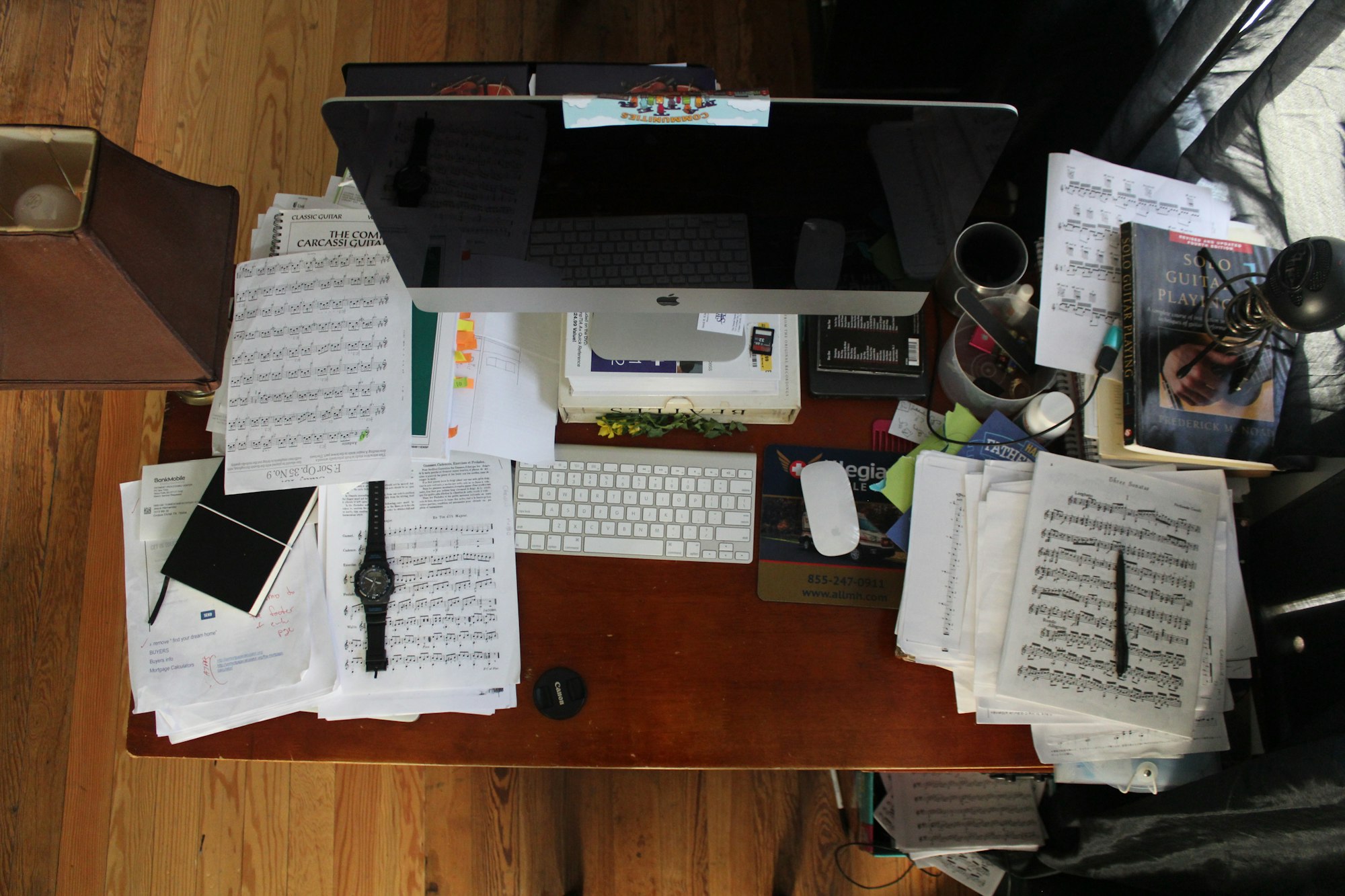A sheet music creator is a tool that allows you to compose, edit, and print sheet music with greater flexibility and control. Whether you’re a composer, arranger, performer, or music teacher, the right software can enhance your creative process. And the best part is that you don't need to be a tech whiz or music theory expert to use it and have fun.
While writing music by hand has its charm, digital notation software offers key advantages:
✔️ Saves time
✔️ Facilitates collaboration
✔️ Protects your work from being lost
In this guide, we’ll explore five essential features to look for when choosing a music notation software in 2025. Get ready to unleash your inner musician! 🎶

1. Essential Features in a sheet music creator
A well-designed sheet music creator should provide the fundamental tools necessary for accurate composition. These include:
- Adding and editing notes – Helps structure and refine your composition.
- Key signatures – Defines the tonality of your piece.
- Time signatures – Establishes the rhythmic framework.
- Dynamics and articulations – Enhances musical expression.
These are the core functions of any notation software. Before considering advanced features, make sure your chosen tool covers these basics.
By the way, if you are unfamiliar with any of the above concepts, you can check out Flat’s resources on music theory.
2. Collaboration and sharing
Collaborating and sharing your work with other composers is a very popular feature that many musicians and composers use nowadays. Sometimes you’re just looking for feedback from your fellow composers, and sometimes you’ll want to work on music pieces simultaneously with others; you’ll want a sheet music creator that lets you do both.
Modern sheet music creators should allow musicians to collaborate in real time, making the creative process more dynamic. Whether you’re:
✅ Seeking feedback from fellow composers
✅ Co-writing a piece with musicians across the globe
Collaboration features can streamline workflows and speed up composition.
Here at the Flat Community, we always get excited when we see composition collaborations between several composers living in different parts of the world. Having a sharing feature really brings composers together and helps them create sheet music much faster and in a more fun and efficient way.

3. Transposition tool
If you’re planning on writing music scores that include different elements or vocal ranges, a transposition tool will be very helpful. Transposing music manually is time-consuming and increases the risk of errors. A built-in transposition tool simplifies this process, allowing you to:
🎵 Shift a composition into different keys with ease.
🎵 Adapt music for various instruments and vocal ranges.
🎵 Explore alternative keys to inspire new ideas.
A strong transposition feature is particularly useful for performers who need music in a key suited to their instrument or voice. Don't overlook transposition when choosing the right sheet music creator for yourself.
4. Custom Keyboard Shortcuts
Efficiency is key when composing. Customizable keyboard shortcuts help you:
⌨️ Speed up note entry and editing
⌨️ Navigate scores quickly without relying on menus
For example, in Flat, you can use Cmd + A to select the entire score instead of manually scrolling. Look for a program that allows shortcut customization so you can work faster and more comfortably.
5. Playback, Audio Features and Synchronization
When composing, playback is essential for refining your music. A good playback system allows you to:
🎧 Listen to your piece as you compose.
🎚️ Adjust tempo and timing for greater precision.
Beyond basic playback, a synchronize audio recording feature can be incredibly useful. For composers and performers who:
🎵 Want to compare different performances.
🎵 Transcribe recorded music into notation.
An audio sync tool lets you align the score with an audio track, making it easier to edit, adjust, and analyze performance. This ensures every note is placed correctly and that all instruments are in sync.
When choosing a your music notation tool make sure it offers customizable playback settings and audio synchronization to enhance your workflow.
Bonus features: User-friendly interface and support
While not strictly musical, a user-friendly interface and strong customer support are essential when choosing your software.
✨ A clean, intuitive design saves time and frustration, allowing you to focus on composing rather than figuring out the software. You don’t want a tool that takes months to learn—better to spend that time creating new scores!
✨ Reliable customer support ensures quick solutions when issues arise, preventing unnecessary disruptions to your workflow.
At Flat, users appreciate our responsive support team:
💬 "Your support staff is fantastic and answers quickly!"
💬 "The customer service is excellent compared to other providers."
These details may seem small, but they make a huge difference in your overall experience.

Conclusion
The best sheet music creator is one that helps you compose professional-quality music efficiently while keeping the process intuitive and enjoyable. Look for software that:
✔️ Provides essential notation tools for precise composition.
✔️ Includes powerful features like playback, transposition, and collaboration.
✔️ Enhances workflow efficiency without unnecessary complexity.
🎵 Try Flat today and see if it’s the right fit for your music composition needs!

